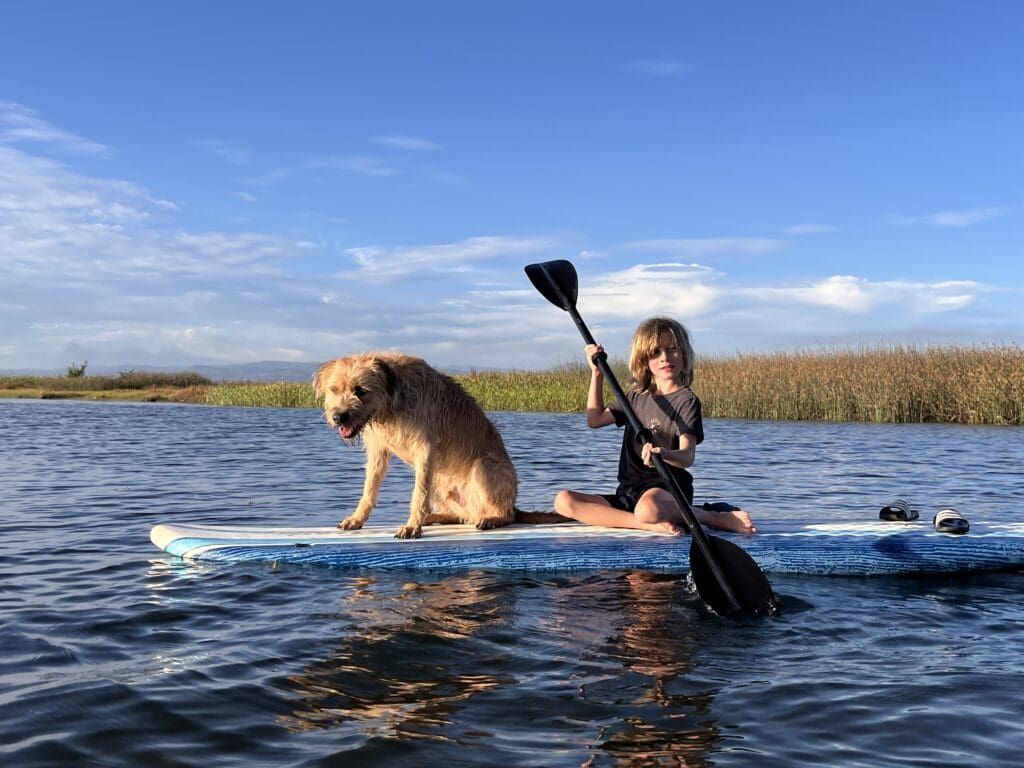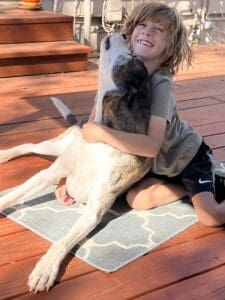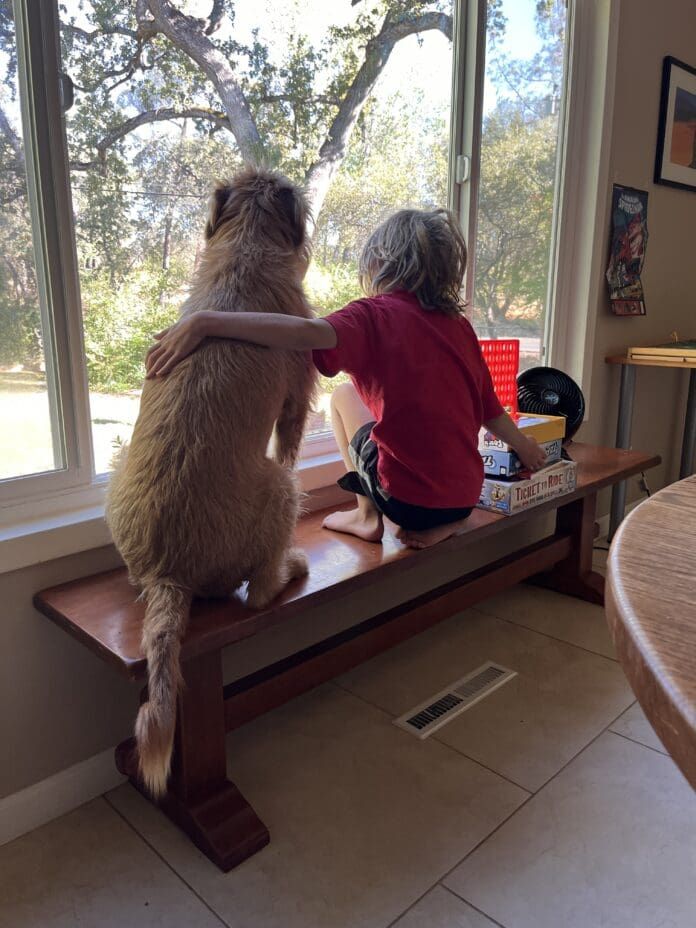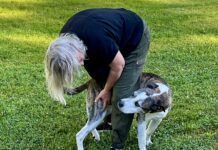Oliver came to California for an end-of-summer, two-week visit with us, and we enjoyed taking him for some fun adventures: a water park, paddle boarding, bike riding, a county fair, and so on. But I most enjoyed watching Oliver when he didn’t think anyone was watching him, playing with, talking to, and wandering around our property with my dogs. He wanted the dogs to accompany him everywhere (they were happy to) and to sleep on his bed (they did not want to; they have other sleeping spots they prefer). And he negotiated with me constantly about whether I loved him enough to give him one of my dogs when his parents finally agreed that they were ready to own a dog. (His mom says this won’t happen until after his 3-year-old brother enters kindergarten—but he’s not getting one of my dogs! Though I’d be happy to help them find and train a worthy candidate.)

Part of the reason I love observing Oliver and the dogs so much is that I, too, was a committed dog-lover as a child. I was younger than my siblings by 5, 6, and 7 years, and we lived in the country with no kids my age close by, so my family’s dogs were really my closest friends when I was growing up. None of our dogs ever wore collars, and I don’t think we even owned a leash, so I had to rely on a friendly relationship with them to convince them to accompany or stay with me as I entertained myself in the outdoors around our house, in our 100-year-old barn, the creek bed that formed one of our property lines, or the fruit orchards we were surrounded by. (It turns out that this is a great skill to have for helping teach dogs to stay with you on off-leash walks!)
Many kids instinctively want to hold their dog’s leash on walks, or even just around the house, but I’ve found that this very quickly leads to the phenomenon of kids pulling, yanking, or dragging their dogs around against their will—not a recommended method for creating a close and loving relationship between them. With my grandson—who can frankly be a little smothering with his affection for my big dogs—I prefer to replicate the dog-handling methods of my childhood: I told Oliver that he’s not allowed to “make” the dogs do anything with a leash, physical force, or even just a bossy tone of voice, but he is welcome to see what he can “get” them to do by using a happy voice, food treats, and the sort of petting they like. And he was able to get them to do all sorts of things!
On Oliver’s visit last year, When Boone was just a year or so old, the shaggy dog was a little cautious around Oliver. He hadn’t had much exposure to little kids and was interested but also wary of Oliver’s sudden movements or being trapped in a hug. But this year, the now-2-year-old dog seemed to remember Oliver from last summer, and was thrilled to have someone nearly constantly pet him. Boone can still be a bit wary of strange children, but he truly loves being around Oliver.

Nearly 9-year-old Woody also loves Oliver and appreciates all the petting, but I did have to impose a new rule for their interactions: Woody loves to lick kids, and Oliver does not mind being licked one bit, even when the big dog’s tongue goes practically up his nose and into his mouth and ears. But sometimes, I have noticed, Woody uses his tongue as a very gentle but nevertheless persistent barrier to being hugged or snuggled. Sometimes he is truly giving Oliver an affectionate lick, but sometimes, I suspected, he licks for the response he usually gets from me: Yuck! Stop! I explained to Oliver that if Woody is licking him in the face, he should take a step back (or lean away) from Woody, and if the licking stops, then Woody might be trying to tell him that he needs more space. It’s a sort of “consent test,” and it worked: About half the time, Woody did seem to be trying to get Oliver to give him a little more breathing room as they lay together in one of our big dog beds or on the couch.
I’m just a step-grandma—Oliver has two other very loving and involved biological grandmas who see him more often than me—but I’m happy to have the ticket to his joy on our visits.







Love the pics of Oliver and your dogs! Our grandsons are still a little too young (4 and 2 years old) to understand that they sometimes make our 7 year old Ridgeback nervous when they are running around playing in the house. The dog does much better when we are all out in the yard where she can put some space between herself and the loud, energetic tiny humans.
BTW, my wife is also a step-grandma but nobody in the family thinks of her as “just” a step-grandma, especially the grandsons. 😉